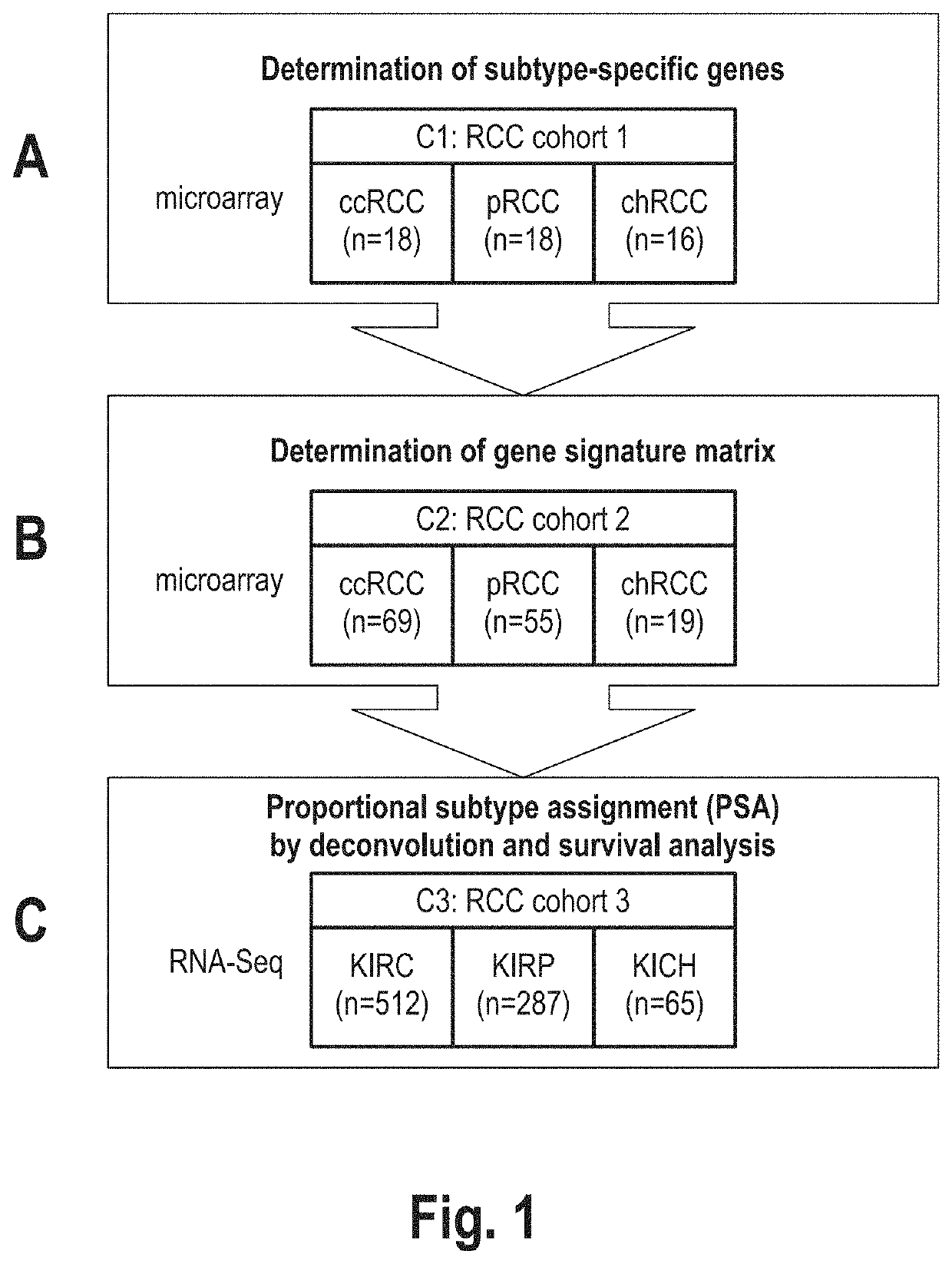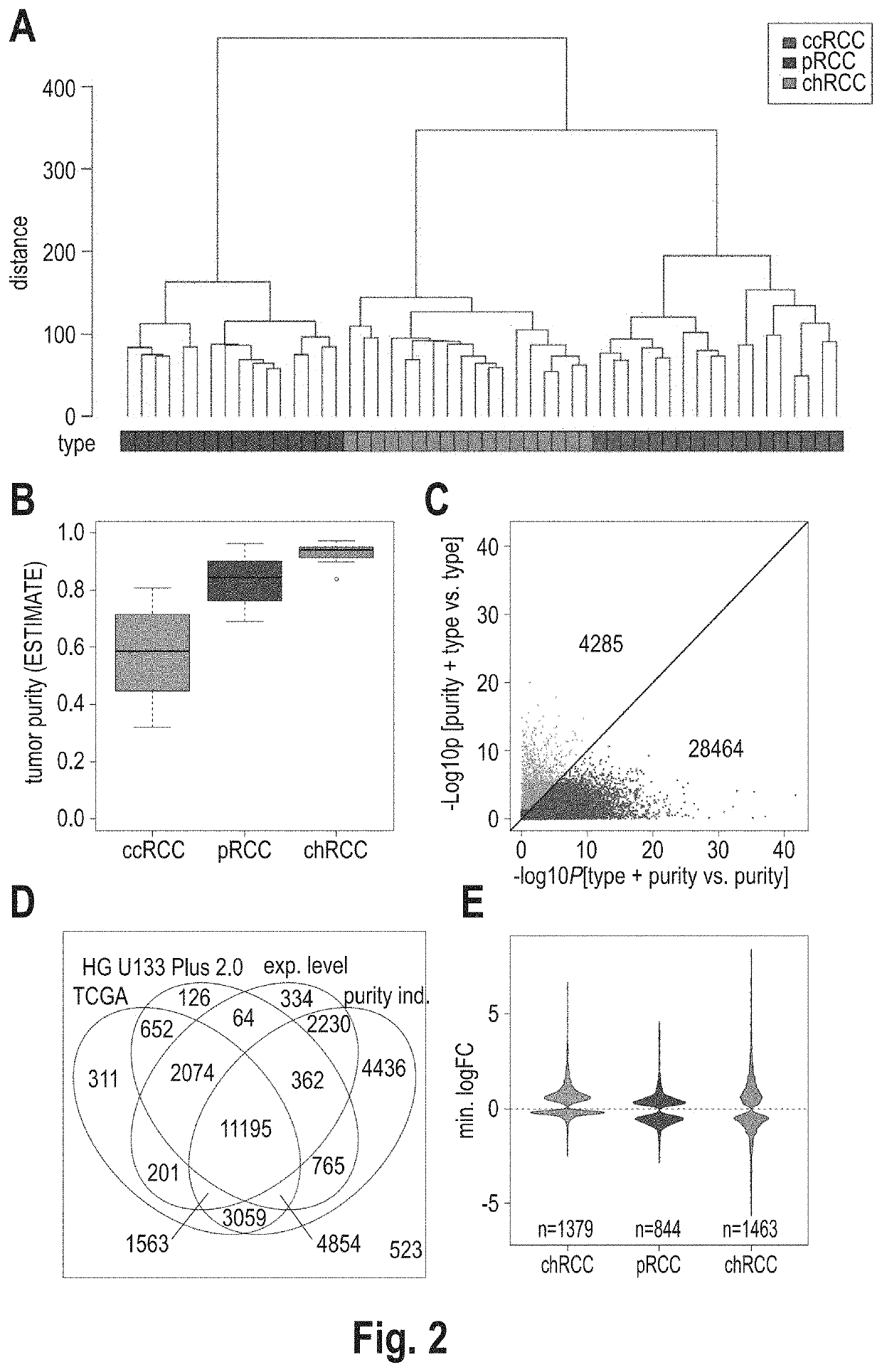Method for determining rcc subtypes
- Summary
- Abstract
- Description
- Claims
- Application Information
AI Technical Summary
Benefits of technology
Problems solved by technology
Method used
Image
Examples
Embodiment Construction
1. Overview
[0081]A subtype classification system based on gene expression data was developed for renal cell carcinoma (RCC). The basic idea was to model any RCC sample as a linear combination of clear cell RCC (ccRCC), chromophobe RCC (chRCC) and papillary RCC (pRCC). More than 95% of all RCC are assigned to one of these subtypes based on histological analysis and they represent both proximal and distal cell types as origin of kidney cancer evolution. Essentially, the inventors assumed a tumor not necessarily belonging to only one of these subtypes, but to carry parts of each of them. Therefore, rather than categorizing a tumor into one of the subtypes, the inventors intended to break down its composition through proportional subtype assignments (PSA).
[0082]Applying the linearity assumption (Y. Zhao and R. Simon, Gene Expression Deconvolution in Clinical Samples. Genome Med. 2(12), p. 93 (2010), the expression of each gene in the RCC sample to be analyzed can be modeled as weighted ...
PUM
| Property | Measurement | Unit |
|---|---|---|
| Fraction | aaaaa | aaaaa |
| Fraction | aaaaa | aaaaa |
| Fraction | aaaaa | aaaaa |
Abstract
Description
Claims
Application Information
 Login to View More
Login to View More - R&D
- Intellectual Property
- Life Sciences
- Materials
- Tech Scout
- Unparalleled Data Quality
- Higher Quality Content
- 60% Fewer Hallucinations
Browse by: Latest US Patents, China's latest patents, Technical Efficacy Thesaurus, Application Domain, Technology Topic, Popular Technical Reports.
© 2025 PatSnap. All rights reserved.Legal|Privacy policy|Modern Slavery Act Transparency Statement|Sitemap|About US| Contact US: help@patsnap.com



